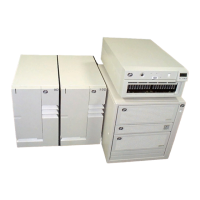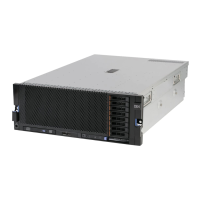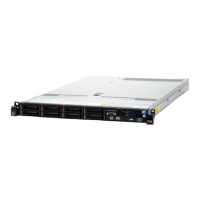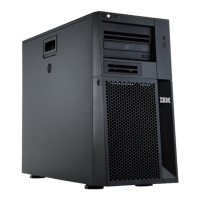The firmware level is denoted by XXYYMMDD, where XX = model designation, YY = year, MM = month,
and DD = day of the release.
The firmware level can be determined by either of the following methods:
v On the AIX command line, by typing:
lscfg -vp|grep -F .MM
A line that begins with ROM level (alterable).. displays the firmware level that is currently on the
system.
v Looking at the top of the service processor main menu.
System Firmware Update Using a Locally Available Image
To update the system firmware using a locally available image, perform the following steps:
1. Log in as root user.
2. If the directory /tmp/fwupdate does not exist, create it by issuing the following command:
mkdir /tmp/fwupdate
3. The firmware update file must be written into the /tmp/fwupdate directory on the system. This can be
done by using the ftp command to get the image from an ftp server or NFS-mounting the directory on
the host server, for example.
The firmware update file can also be transferred to the target system by backing up the image onto
diskette from another server and restoring it into the /tmp/fwupdate directory.
After the firmware update file has been written into the /tmp/fwupdate directory, verify its existence by
entering the following command:
ls /tmp/fwupdate/MM*.img
The update file will have the format MMyymmdd.img. The MM indicates that this is an update image
for a Model M80 or Model 6M1 system: yy is the year, mm is the month, and dd is the day of the
update file.
4. After the update file has been written to the /tmp/fwupdate directory, enter the following commands:
cd /usr/lpp/diagnostics/bin
./update_flash -f /tmp/fwupdate/MMyymmdd.img
Attention: Do not overlook the periods (.) in the commands shown above. AIX commands are
case-sensitive. Type them exactly as shown.
You
will be asked for confirmation to proceed with the firmware update and the required reboot. If you
confirm, the system will apply the new firmware, reboot, and return to the AIX prompt. This may take up to
ten minutes depending on the configuration of the system.
Attention: On some systems, the message Wait for rebooting before stopping may display on the
system console. Do not turn off the system until the system has fully rebooted to the AIX login prompt. If a
shutdown is necessary at that time, log in as root user and issue the shutdown command.
While the update is in progress, you will see Rebooting... on the display for several minutes.
The firmware update is complete.
Updating System Firmware From the Service Processor Menus
This procedure requires a set of firmware update diskettes in backup format.
Chapter 8. Using the Service Processor 391

